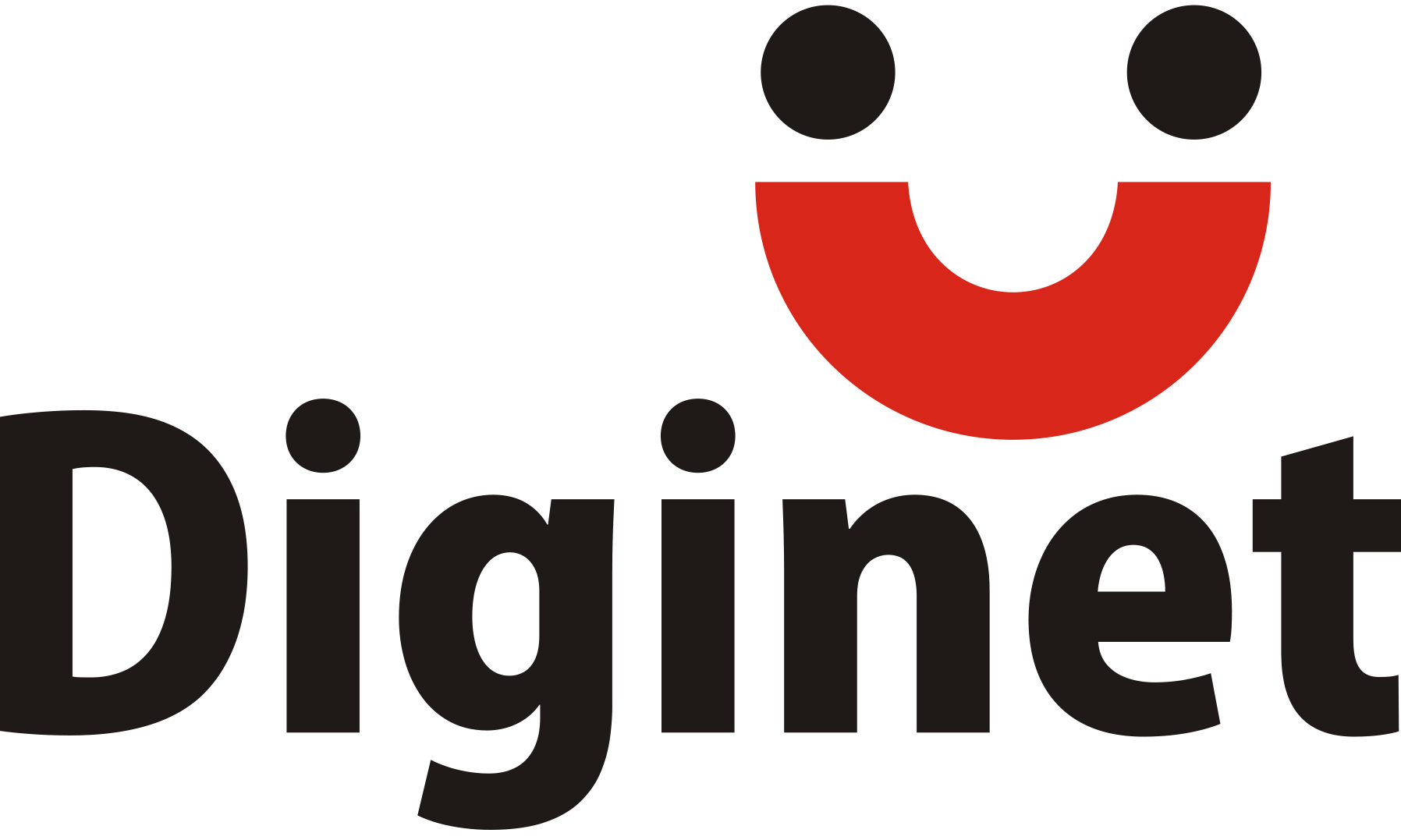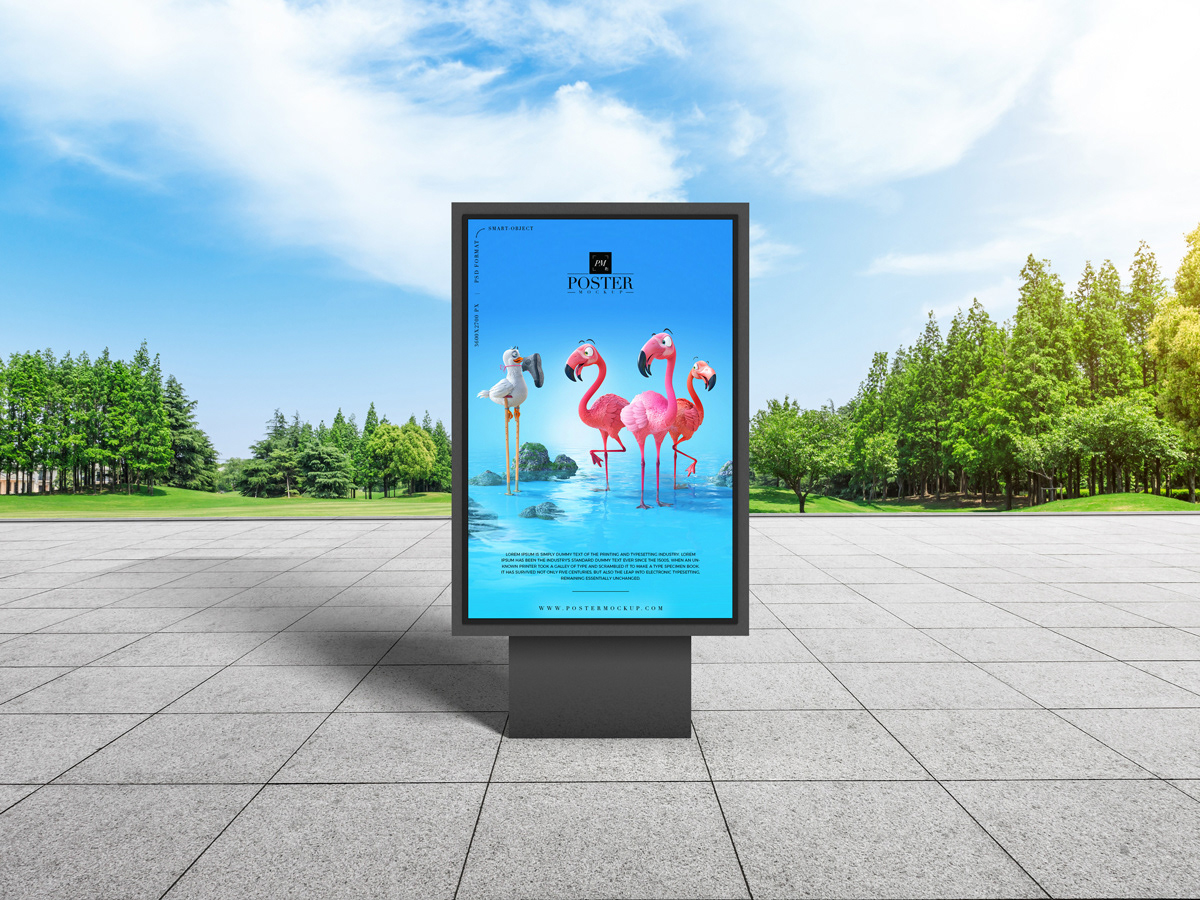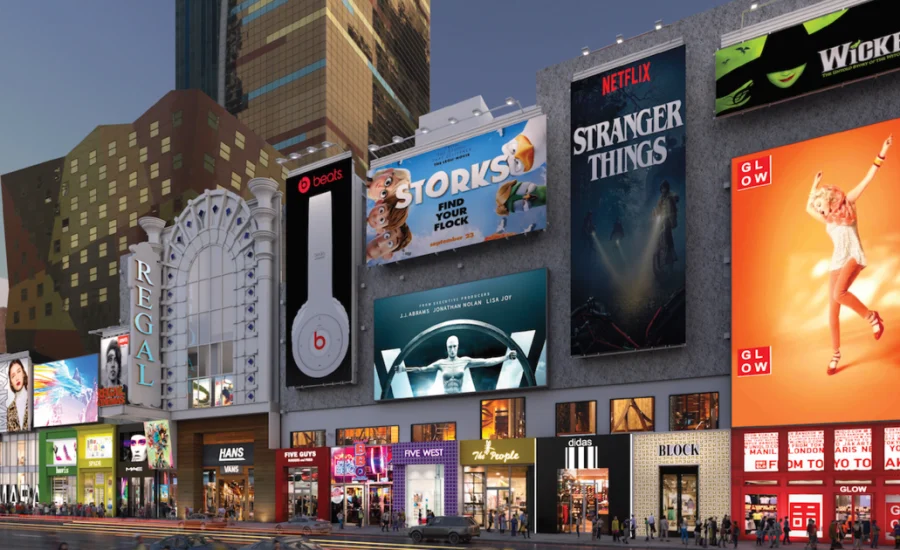
In today’s fast-paced, visually-driven world, capturing consumers’ attention is more challenging than ever. With the rise of digital technology, traditional advertising methods are evolving to keep pace. One innovative solution is Digital Out-of-Home (DOOH) advertising, which combines the impact of outdoor advertising with the precision of digital targeting.
What is Digital Out-of-Home (DOOH) Advertising?
DOOH advertising encompasses various formats, including digital billboards, mall displays, and transit shelter screens. By leveraging digital content, brands can now engage audiences in unique and compelling ways, driving brand recognition and loyalty.
Why Brand Recognition Matters
Brand recognition is the foundation of successful advertising. When consumers recognize and remember your brand, they’re more likely to:
- Trust your products or services
- Recommend you to others
- Make repeat purchases
In today’s competitive market, establishing strong brand recognition is crucial for businesses of all sizes.
The Role of Digital Content in DOOH
Digital content plays a vital role in DOOH advertising’s effectiveness. By crafting engaging, relevant, and visually appealing content, brands can:
- Cut through the noise and grab attention
- Communicate complex messages simply
- Drive emotional connections with audiences
Benefits of Digital Content in DOOH Advertising
Digital content in DOOH advertising offers numerous benefits, transforming the way brands connect with audiences. Let’s dive into the advantages:
1. Increased Visibility and Reach
Digital content in DOOH advertising expands your brand’s visibility, reaching a larger audience through:
- High-traffic locations (malls, airports, train stations)
- Strategic placement (billboards, bus shelters)
- Eye-catching displays (LED screens, video walls)
2. Enhanced Audience Engagement
Interactive and dynamic digital content captivates audiences, fostering engagement through:
- Touchscreens and gesture-based interactions
- Real-time updates and social media integration
- Gamification and contests
3. Improved Brand Recall and Recognition
Digital content in DOOH advertising boosts brand recall and recognition through:
- Consistent branding and messaging
- Memorable visuals and storytelling
- Repetitive exposure
4. Targeted Advertising Capabilities
Digital content in DOOH enables targeted advertising based on:
- Demographic targeting (age, location, interests)
- Behavioral targeting (commuting patterns, purchase history)
- Real-time optimization
5. Real-Time Metrics and Analytics
Digital content in DOOH provides measurable results through:
- Impression-based metrics
- Engagement metrics (clicks, interactions)
- Sales lift and ROI analysis
6. Flexibility and Agility
Digital content in DOOH allows for:
- Quick content updates and changes
- A/B testing and experimentation
- Seamless integration with omnichannel campaigns
7. Cost-Effectiveness
Digital content in DOOH reduces costs by eliminating:
- Printing or installation costs
- Efficient content distribution
- Extended campaign lifespan
8. Enhanced Customer Experience
Digital content in DOOH creates immersive experiences through:
- Interactive storytelling
- Personalized messaging
- Seamless integration with physical environments
Types of Digital Content for DOOH
1. Video Content
Video content uses moving images and sound to captivate audiences, ideal for storytelling, brand awareness, and product demos.
Benefits:
- Engaging storytelling
- Emotional connection
- Product demonstrations
- Brand awareness
Examples:
- 15-second ads
- Brand stories
- Product tutorials
- Event promotions
2. Interactive Content
Interactive content encourages audience participation through touch, gestures, or voice, increasing engagement and brand recall.
Benefits:
- Increased engagement
- Data collection
- Personalization
- Brand recall
Examples:
- Touchscreen quizzes
- Gesture-based games
- Voice-activated surveys
- Interactive product demos
3. Dynamic Content
Dynamic content updates in real-time, using data, social media, or other sources, creating relevance and contextual messaging.
Benefits:
- Relevance
- Timeliness
- Contextual messaging
- Engagement
Examples:
- Live news feeds
- Social media updates
- Weather forecasts
- Sports scores
4. Image-Based Content
Image-based content showcases products, services, or brand stories through static images, emphasizing visual appeal and brand recognition.
Benefits:
- Visual appeal
- Brand recognition
- Product showcase
- Simple messaging
Examples:
- Product showcases
- Brand logos
- Promotional images
- Event announcements
5. Gamification and Contests
Gamification and contests encourage audience participation through rewards or competition, driving engagement and brand loyalty.
Benefits:
- Engagement
- Data collection
- Brand loyalty
- Social sharing
Examples:
- Quizzes
- Games
- Sweepstakes
- Leaderboards
6. Social Media Integration
Social media integration incorporates live feeds, user-generated content, or influencer partnerships, amplifying brand presence.
Benefits:
- Social media amplification
- User-generated content
- Influencer marketing
- Real-time engagement
Examples:
- Live Twitter feeds
- Instagram galleries
- Facebook contests
- Influencer takeovers
7. Contextual Content
Contextual content uses location, time, or weather to create relevant messaging and personalization.
Benefits:
- Relevance
- Personalization
- Contextual messaging
- Engagement
Examples:
- Location-based offers
- Time-sensitive promotions
- Weather-based messaging
- Event-based content
8. Storytelling Content
Storytelling content evokes emotions and builds connections through narrative techniques, driving emotional connection and brand loyalty.
Benefits:
- Emotional connection
- Brand loyalty
- Engagement
- Memory recall
Examples:
- Brand stories
- Customer testimonials
- Product origin stories
- Emotional appeals
9. Data Visualization
Data visualization presents complex data in an engaging, easy-to-understand format, providing clarity and decision-making support.
Benefits:
- Clarity
- Engagement
- Insight
- Decision-making
Examples:
- Infographics
- Charts
- Graphs
- Interactive dashboards
10. Immersive Content
Immersive content uses AR, VR, or 3D visuals to create engaging experiences, driving emotional connection and brand loyalty.
Benefits:
- Engagement
- Emotional connection
- Memory recall
- Brand loyalty
Examples:
- AR product demos
- VR experiences
- 3D visualizations
- Interactive simulations
Strategies for Effective Digital Content in DOOH
To maximize the impact of digital content in DOOH, consider the following strategies:
Contextual Relevance
- Use location-based messaging to target specific audiences.
- Utilize time-based messaging to align with daily routines.
- Incorporate weather-based messaging to reflect current conditions.
Example: A coffee shop uses DOOH ads near their location, promoting hot coffee on cold days and iced coffee on warm days.
Personalization
- Use data analytics to understand audience demographics and interests.
- Tailor messaging to resonate with specific audience segments.
- Utilize dynamic content to update messaging in real-time.
Example: A fashion brand uses DOOH ads to showcase products popular among young adults in a trendy shopping district.
Storytelling and Narrative
- Craft compelling narratives to evoke emotions and connection.
- Use visuals and animations to convey complex messages.
- Create memorable brand stories and taglines.
Example: A car brand uses DOOH ads to tell the story of a family’s road trip, highlighting safety features.
Visual Appeal
- Use high-quality graphics, images, and videos.
- Ensure clear typography and easy-to-read messaging.
- Utilize color theory to evoke emotions.
Example: A beauty brand uses DOOH ads featuring stunning visuals of their products, with clear messaging highlighting benefits.
Call-to-Action (CTA) Optimization
- Use clear and direct CTAs (e.g., “Visit Our Website”).
- Provide incentives for immediate action (e.g., discounts).
- Track CTA effectiveness through analytics.
Example: A restaurant uses DOOH ads with a CTA to order online, offering a limited-time discount.
Measurement and Evaluation
- Track engagement metrics (e.g., views, clicks).
- Monitor sales lift and ROI.
- Conduct A/B testing to optimize content.
Example: A retailer uses DOOH ads and tracks sales increase, adjusting messaging and targeting accordingly.
Measuring Digital Content’s Impact on Brand Recognition
To evaluate the effectiveness of digital content in DOOH, it’s crucial to measure its impact on brand recognition. Here are key metrics and methods:
Metrics for Success
- Impressions: Number of people exposed to the ad.
- Views: Number of times the ad was viewed.
- Engagement: Interactions (e.g., clicks, touches).
- Recall: Audience memory of the ad.
- Brand Awareness: Increase in brand recognition.
Data Analytics Tools
- DOOH Platform Analytics: Built-in metrics from DOOH platforms.
- Third-Party Analytics: Specialized tools (e.g., Nielsen, comScore).
- Mobile Tracking: Measure mobile engagement and conversions.
Measuring Brand Recognition
- Surveys: Conduct surveys to gauge brand awareness.
- Focus Groups: Gather feedback from target audiences.
- Social Media Listening: Monitor brand mentions.
ROI Analysis
- Sales Lift: Measure sales increase attributed to DOOH ads.
- Conversion Rate: Track conversions (e.g., website visits).
- Cost-Effectiveness: Compare DOOH ROI to other marketing channels.
A/B Testing and Experimentation
- Content Variations: Test different messaging and visuals.
- Targeting Options: Experiment with demographics and locations.
- Timing: Optimize ad scheduling.
The Role of Digital Content in DOOH Advertising
Digital content plays a vital role in DOOH advertising’s effectiveness. By crafting engaging, relevant, and visually appealing content, brands can:
- Cut through the noise and grab attention.
- Communicate complex messages simply.
- Drive emotional connections with audiences.
Benefits of Digital Content in DOOH Advertising
1. Increased Visibility and Reach
Digital content in DOOH advertising expands your brand’s visibility, reaching a larger audience through:
- High-traffic locations (malls, airports, train stations).
- Strategic placement (billboards, bus shelters).
- Eye-catching displays (LED screens, video walls).
2. Enhanced Audience Engagement
Interactive and dynamic digital content captivates audiences, fostering engagement through:
- Touchscreens and gesture-based interactions.
- Real-time updates and social media integration.
- Gamification and contests.
3. Improved Brand Recall and Recognition
Digital content in DOOH advertising boosts brand recall and recognition by:
- Consistent branding and messaging.
- Memorable visuals and storytelling.
- Repetitive exposure.
4. Targeted Advertising Capabilities
Digital content in DOOH enables targeted advertising based on:
- Demographics (age, location, interests).
- Behavioral targeting (commuting patterns, purchase history).
- Real-time optimization.
5. Real-Time Metrics and Analytics
Digital content in DOOH provides measurable results, such as:
- Impression-based metrics.
- Engagement metrics (clicks, interactions).
- Sales lift and ROI analysis.
6. Flexibility and Agility
With digital content, you can quickly update content, test different variations, and integrate seamlessly with omnichannel campaigns.
7. Cost-Effectiveness
Digital content reduces costs by:
- Eliminating printing and installation expenses.
- Extending campaign lifespan with efficient distribution.
8. Enhanced Customer Experience
Digital content in DOOH creates immersive experiences with:
- Interactive storytelling.
- Personalized messaging.
- Seamless integration with physical environments.
Types of Digital Content in DOOH
1. Video Content
Video content is effective for storytelling, brand awareness, and product demos through engaging visuals and sound.
2. Interactive Content
Touchscreens, gestures, and voice interactions engage audiences, fostering participation and brand recall.
3. Dynamic Content
Real-time updates, social media feeds, and data-driven visuals create relevance and timeliness.
4. Image-Based Content
Static images emphasize visual appeal, showcasing products and services.
5. Gamification and Contests
Quizzes, games, and sweepstakes encourage audience participation, boosting engagement and brand loyalty.
6. Social Media Integration
Live feeds, user-generated content, and influencer partnerships amplify social media presence and engagement.
7. Contextual Content
Location, time, and weather-based messaging create relevance and personalization.
8. Storytelling Content
Narrative-driven videos, animations, and brand stories evoke emotions and build strong connections.
9. Data Visualization
Infographics, charts, and graphs present complex data in an easy-to-understand, engaging format.
10. Immersive Content
AR, VR, and 3D visuals provide immersive experiences that simulate real-world interactions.
Strategies for Effective Digital Content in DOOH
To maximize the impact of digital content in DOOH, it’s essential to follow specific strategies that ensure relevance, engagement, and brand recognition.
1. Contextual Relevance
- Use location-based messaging to target specific audiences.
- Utilize time-based messaging to align with daily routines.
- Incorporate weather-based messaging to reflect current conditions.
Example: A coffee shop uses DOOH ads near their location, promoting hot coffee on cold days and iced coffee on warm days.
2. Personalization
- Leverage data analytics to understand audience demographics and interests.
- Tailor messaging to resonate with specific audience segments.
- Utilize dynamic content to update messaging in real-time.
Example: A fashion brand uses DOOH ads to showcase products popular among young adults in a trendy shopping district.
3. Storytelling and Narrative
- Craft compelling narratives to evoke emotions and connection.
- Use visuals and animations to convey complex messages.
- Create memorable brand stories and taglines.
Example: A car brand uses DOOH ads to tell the story of a family’s road trip, highlighting safety features.
4. Visual Appeal
- Use high-quality graphics, images, and videos.
- Ensure clear typography and easy-to-read messaging.
- Utilize color theory to evoke emotions.
Example: A beauty brand uses stunning visuals of their products in DOOH ads, with clear messaging highlighting benefits.
5. Call-to-Action (CTA) Optimization
- Use clear and direct CTAs (e.g., “Visit Our Website”).
- Provide incentives for immediate action (e.g., discounts).
- Track CTA effectiveness through analytics.
Example: A restaurant uses DOOH ads with a CTA to order online, offering a limited-time discount.
6. Measurement and Evaluation
- Track engagement metrics such as views and clicks.
- Monitor sales lift and ROI.
- Conduct A/B testing to optimize content.
Example: A retailer uses DOOH ads and tracks an increase in sales, adjusting messaging and targeting accordingly.
Measuring Digital Content’s Impact on Brand Recognition
Evaluating the effectiveness of digital content in DOOH is crucial for determining the return on investment (ROI) and its overall impact on brand recognition.
Metrics for Success
- Impressions: Number of people exposed to the ad.
- Views: Number of times the ad was viewed.
- Engagement: Interactions such as clicks and touches.
- Recall: Audience memory of the ad.
- Brand Awareness: Increase in brand recognition over time.
Data Analytics Tools
- DOOH Platform Analytics: Built-in metrics from DOOH platforms.
- Third-Party Analytics: Specialized tools like Nielsen and comScore.
- Mobile Tracking: Measure mobile engagement and conversions through connected devices.
Measuring Brand Recognition
- Surveys: Conduct surveys to gauge brand awareness among audiences.
- Focus Groups: Collect feedback from target audiences to measure brand sentiment.
- Social Media Listening: Monitor brand mentions and conversations to understand the impact of DOOH ads.
ROI Analysis
- Sales Lift: Measure the increase in sales attributed to DOOH campaigns.
- Conversion Rate: Track conversions, such as website visits or product purchases.
- Cost-Effectiveness: Compare the ROI of DOOH campaigns against other marketing channels.
A/B Testing and Experimentation
- Content Variations: Test different messaging, visuals, and formats.
- Targeting Options: Experiment with demographic and geographic targeting.
- Timing: Optimize ad scheduling for maximum exposure.
Example: A retailer uses DOOH ads and tracks 500,000 impressions, 10,000 engagements, a 25% increase in brand awareness, and a 5% sales lift.
Industry Examples and Case Studies: Successful DOOH Campaigns
Retail: Coca-Cola’s “Share a Coke” Campaign
- Objective: Increase brand awareness and sales.
- Strategy: Dynamic DOOH ads displaying popular names.
- Results:
- 7% sales increase.
- 50% increase in social media engagement.
Automotive: Toyota’s “Rav4” Launch Campaign
- Objective: Generate buzz for the new model.
- Strategy: Interactive DOOH ads with virtual test drives.
- Results:
- 25% increase in test drives.
- 10% increase in sales.
Entertainment: Disney’s “Star Wars” Promotion
- Objective: Create immersive experiences.
- Strategy: AR-enabled DOOH ads.
- Results:
- 50% increase in ticket sales.
- 20% increase in social media engagement.
Food and Beverage: McDonald’s “McRib” Campaign
- Objective: Drive sales and engagement.
- Strategy: Location-based DOOH ads with limited-time offers.
- Results:
- 12% increase in sales.
- 30% increase in mobile orders.
Fashion: H&M’s “Garment Collecting” Initiative
- Objective: Promote sustainability.
- Strategy: Interactive DOOH ads encouraging garment collection.
- Results:
- 20% increase in garment collection.
- 15% increase in brand awareness.
Key Takeaways:
- Personalization and interactivity drive engagement.
- Contextual relevance boosts sales.
- Immersive experiences create memorable brand moments.
The Future of Digital Content in DOOH: Trends and Innovations
The future of digital content in DOOH is shaped by emerging technologies and evolving consumer behavior.
Emerging Trends
- Artificial Intelligence (AI): AI will play a bigger role in personalizing content and optimizing ad delivery based on real-time data.
- Augmented Reality (AR): Brands are integrating AR into DOOH ads to create highly engaging, interactive experiences.
- 5G Networks: With faster data transfer and improved connectivity, 5G will enable seamless, high-quality streaming of DOOH content.
- Programmatic DOOH: Automated ad buying and real-time optimization will make campaigns more efficient and precise.
Innovations in Display Technology
- LED Displays: Brighter, more energy-efficient displays that are perfect for high-visibility campaigns.
- OLED Displays: Thin, flexible, and transparent screens that open up new possibilities for creative content.
- Projection Mapping: Large-scale projections that transform buildings and other surfaces into engaging digital canvases.
Advancements in Content Creation
- Dynamic Creative Optimization (DCO): Real-time content changes based on data and environmental factors.
- Interactive Storytelling: Advanced storytelling techniques, including AR and VR, offer immersive brand experiences.
- Virtual Reality (VR): Fully immersive VR environments are increasingly being used in DOOH to create captivating, hands-on experiences.
Data-Driven DOOH
- Real-Time Analytics: Instant feedback on campaign performance enables marketers to make data-driven decisions on the fly.
- Audience Measurement: Accurate audience counting tools ensure more precise targeting.
- Data Integration: Seamless integration with other marketing channels for a holistic view of campaign performance.
Example: A retail brand uses AI-powered DOOH ads to optimize content delivery based on real-time sales data, resulting in a 15% increase in sales and 20% increase in customer engagement.
Conclusion
Digital content in DOOH advertising is revolutionizing the way brands connect with consumers. By understanding what works—contextual relevance, personalization, and interactive storytelling—and staying ahead of trends like AI and AR, brands can craft campaigns that not only capture attention but drive meaningful engagement and lasting brand recognition.
With the right strategy, DOOH can be an incredibly powerful tool for boosting brand awareness, enhancing customer experiences, and increasing ROI. Now is the time to embrace these advancements and future-proof your advertising approach for success.
Recent Topics
-
 District App’s High-Impact DOOH Campaign by Diginet Media at DLF Noida
District App’s High-Impact DOOH Campaign by Diginet Media at DLF Noida -
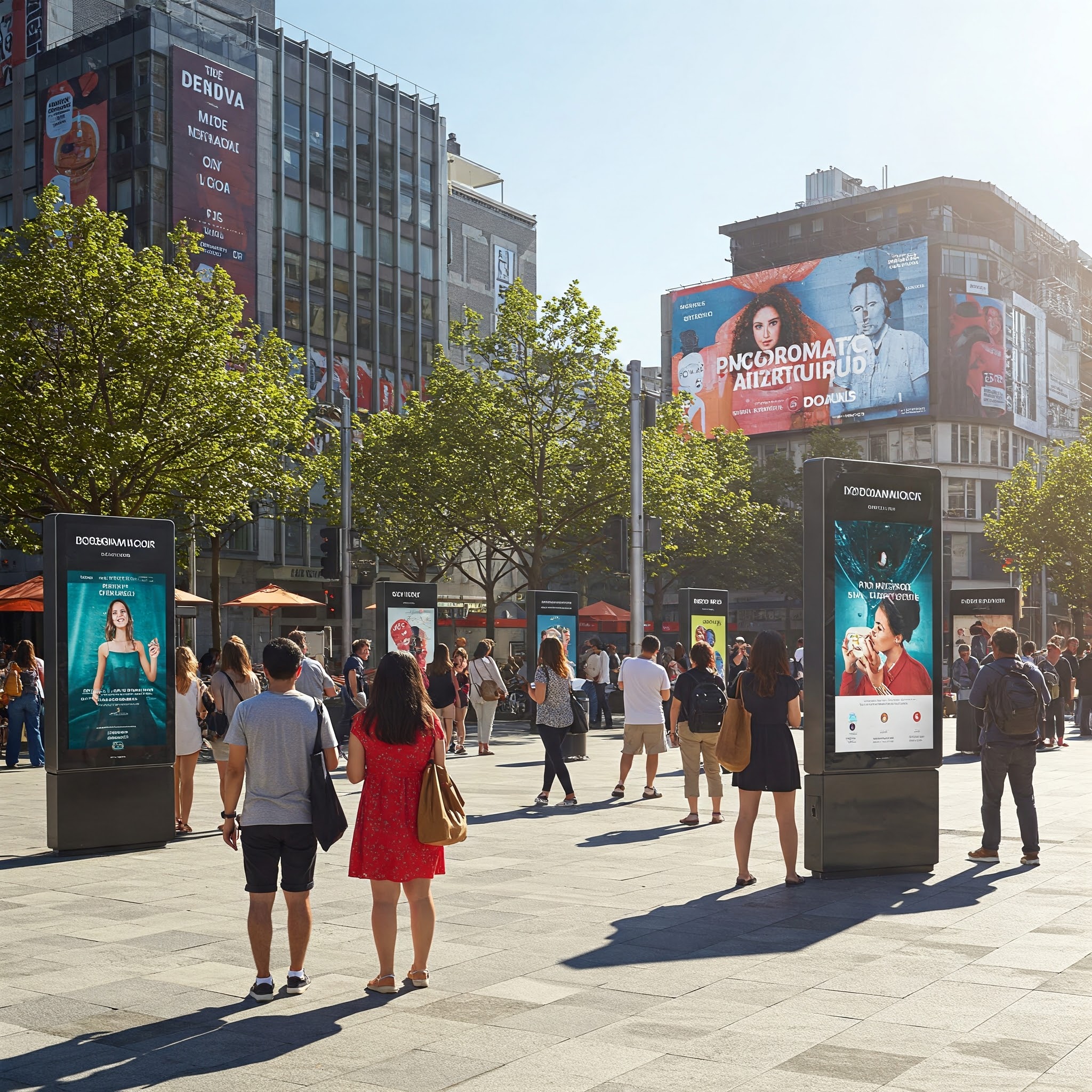 How Brands Win the Attention War with Programmatic Advertising & DOOH Media
How Brands Win the Attention War with Programmatic Advertising & DOOH Media -
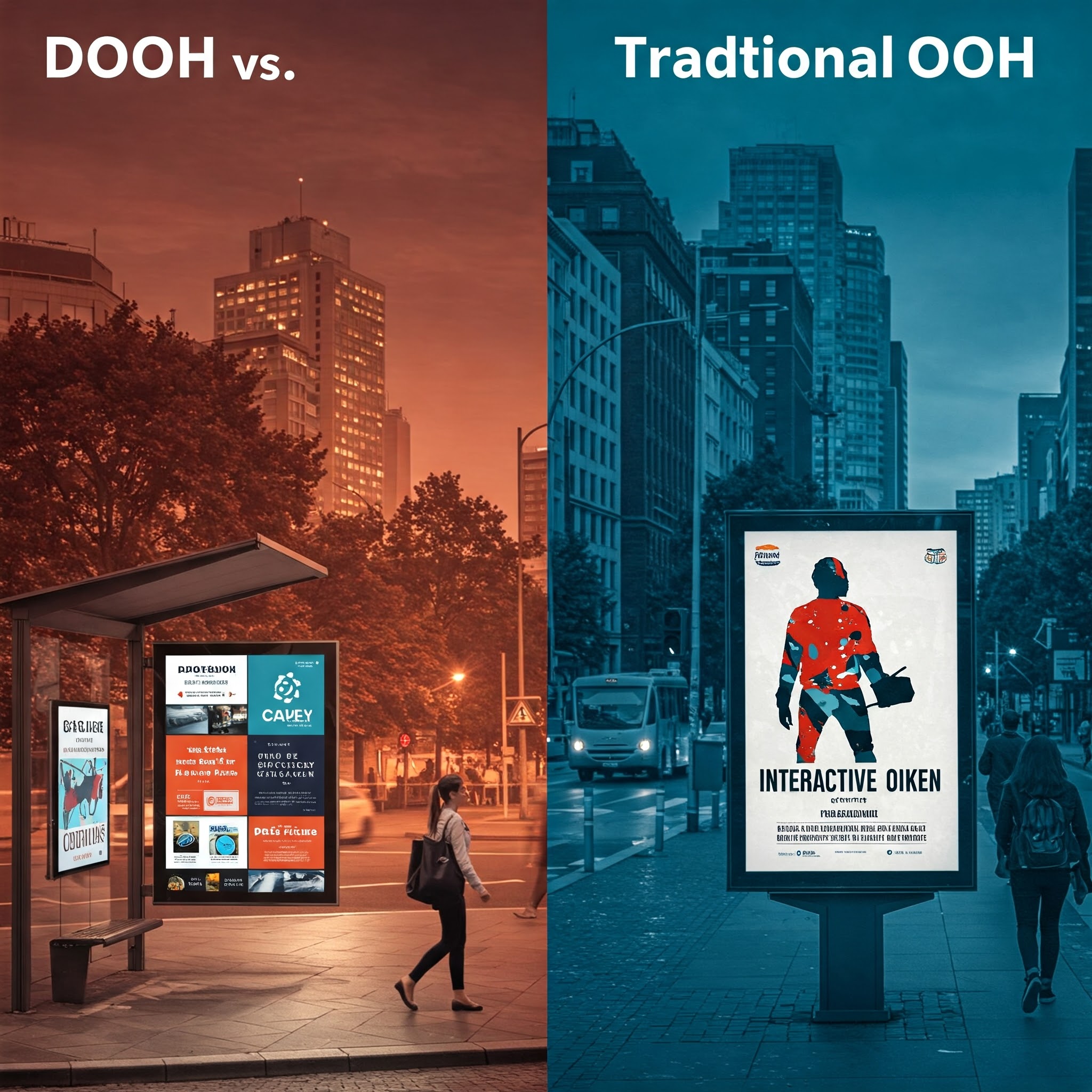 DOOH vs. Traditional OOH: Why Digital is the Future of Outdoor Advertising
DOOH vs. Traditional OOH: Why Digital is the Future of Outdoor Advertising -
 Sky Force Movie DOOH Campaign at DLF Mall
Sky Force Movie DOOH Campaign at DLF Mall -
 How to Choose the Right Outdoor Media Agency: A Complete Guide
How to Choose the Right Outdoor Media Agency: A Complete Guide -
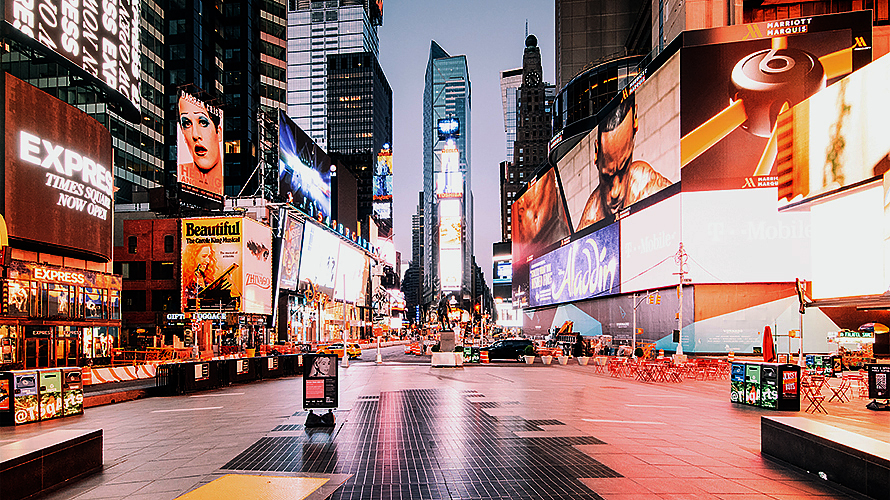 Out-of-home advertising (OOH) - How to Maximize Your Reach
Out-of-home advertising (OOH) - How to Maximize Your Reach -
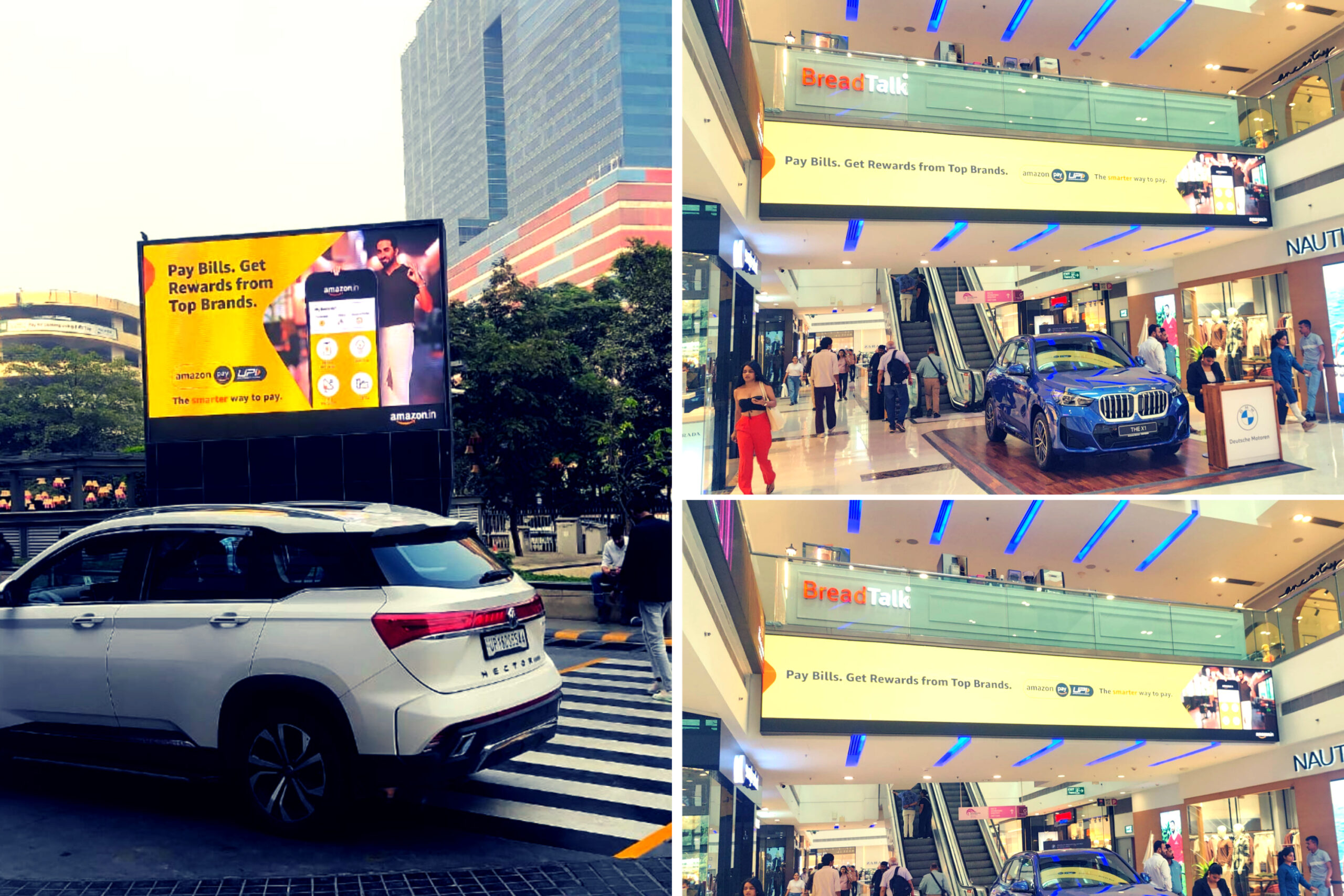 Amazon Pay's Digital Ad Campaign DLF Mall
Amazon Pay's Digital Ad Campaign DLF Mall -
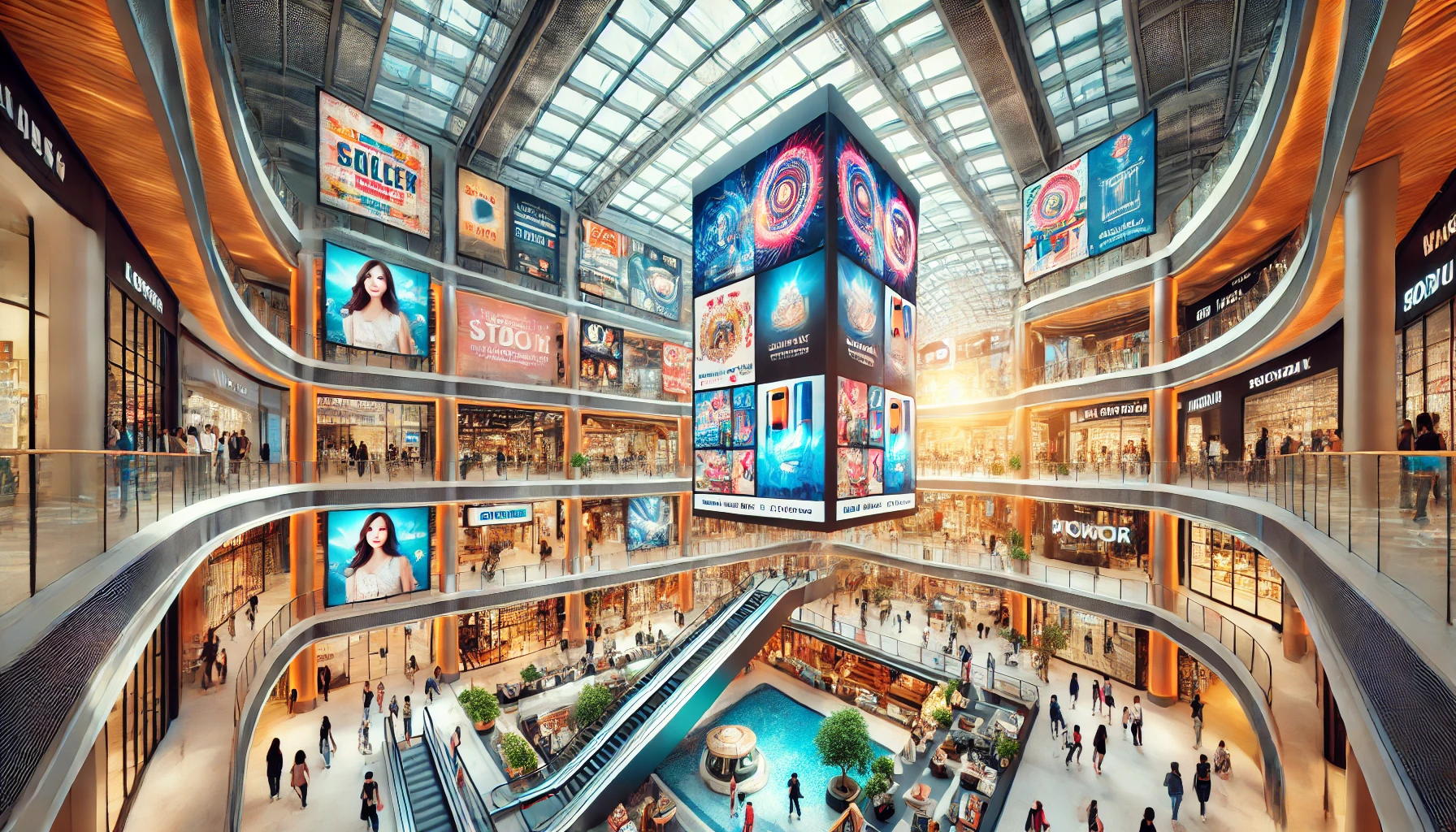 Mall Advertising in Noida: What You Need to Know
Mall Advertising in Noida: What You Need to Know
